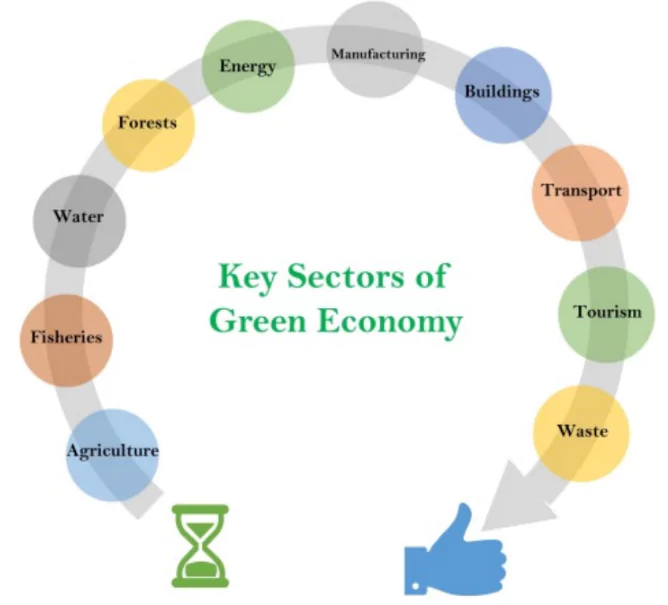A new analysis by the International Monetary Fund (IMF) reveals that fewer women are working in sustainable industries, despite rising job opportunities in the green sectors.
What is the Green Glass Ceiling?
- Invisible Barrier: The “green glass ceiling” is an unseen barrier that stops women from getting higher positions in sustainable industries like renewable energy, sustainable agriculture, and waste management.
- Gender Gap Impact: Because women are underrepresented in these jobs, the gender gap continues, and it makes it harder for the world to move towards a greener economy.
- Effects on Women’s Employment
- Fewer Job Opportunities: Women have fewer chances to get hired and are less likely to hold leadership roles in sustainable industries.
- Wage Gaps: Women working in green jobs often earn less than their male counterparts.
- Career Advancement Issues: With few women in senior positions, it is harder for them to move up in their careers and have a say in decision-making.
- Impact on Economy: Having fewer women in these jobs can slow down the shift to a greener economy since different ideas and skills are important for new solutions and progress.
- Steps to Address the Green Glass Ceiling
-
- Promote Gender Equality: Everyone—governments, businesses, and society—needs to work together to support gender equality in sustainable industries.
- Create Equal Opportunities: Ensure that women have the same job opportunities in these sectors.
- Encourage Inclusivity: Build an inclusive environment that helps women grow in their careers within sustainable industries.
|
Enroll now for UPSC Online Classes
About The Green Sector

- The green sector encompasses industries and practices that prioritize environmental protection and sustainability.
- Objective: It aims to reduce carbon emissions, conserve natural resources, and combat climate change.
- Key characteristics
- Sustainability: Focuses on practices that do not harm the environment or deplete resources.
- Renewable Energy: Utilizes clean energy sources like solar, wind, and hydro power.
- Reduced Carbon Footprint: Aims to lower greenhouse gas emissions.
- Significance of the green sector
- Environmental Protection: Mitigate climate change and preserve ecosystems.
- Economic Growth: Create jobs in emerging green industries.
- Public Health: Reduce pollution and promote healthier living conditions.
Key Findings of IMF analysis: Gender Disparities in Green Jobs
- Underrepresentation of Women: Despite growth in green job opportunities, fewer women are employed in sustainable industries compared to men.
- They are particularly underrepresented in renewable energy, sustainable agriculture, and waste management sectors.
- STEM Education Disparities
- Low Female Graduates: There is a significant gap in the green sector because very few women are graduating from science, technology, engineering, and mathematics (STEM) fields, which are crucial for many green jobs.
- This limits their access to many green job opportunities.
- Regional Variations: Countries like Brazil, Colombia, and South Africa have a significant gender gap in STEM education and managerial positions.
- Job Distribution in Green Sectors
- Dominance of Men: Men hold approximately two-thirds of green jobs globally, while women occupy only one-third.
- Advanced vs. Emerging Economies: In advanced economies, green jobs represent 20% of men’s employment but only 6% of women’s.
- In emerging markets, the figures are 16% for men and 4.6% for women.
- Continuing Growth of Polluting Jobs
- Growth in EMDEs: Polluting jobs are still increasing, particularly in emerging market and developing economies (EMDEs), often occupied by men.
- Health Hazards: Women in low-income countries (LICs) face greater exposure to environmental and health risks associated with polluting industries.
- Economic Implications of Green Jobs
- Wage Premium: Green jobs offer a wage premium—7% for men and 12% for women—indicating higher demand for skilled workers.
- Gender Pay Gap: The gender pay gap in green jobs is 30% narrower than in the overall economy, suggesting a potential for improving pay equality.
- Importance of Gender Equality for Climate Policies
- Effectiveness of Climate Strategies: Economies with a higher proportion of STEM-educated workers and more inclusive labor markets are better positioned for a successful green transition.
- Impact of Gender Parity: Countries with greater gender equality experience more significant reductions in greenhouse gas emissions when implementing climate policies.
- Recommendations for Closing the Gap
- Enhance STEM Education: Focus on increasing STEM education access for women.
- Promote Gender Equality: Foster gender equality in the workforce.
- Retrain Workers: Provide retraining for workers in polluting sectors to transition to green jobs.
- Address Recruitment Bias: Tackle gender bias in hiring and management practices.
Reasons for Women’s Underrepresentation in Sustainable Sectors
- Gender Norms and Stereotypes
- Traditional views often push women toward jobs in areas like textiles and food.
- Men typically dominate fields like infrastructure and manufacturing, limiting women’s opportunities in sustainable sectors.
- Workplace Discrimination
- Women often face unfair treatment in hiring, promotions, and pay in male-dominated sectors.
- Discrimination can make women feel unwelcome and undervalued, discouraging them from pursuing careers in sustainable fields.
- Limited Access to Resources and Networks
- Women may not have the same access to training and professional connections necessary for success.
- This lack of support can hinder their chances of securing jobs in sustainable sectors.
- Policy and Institutional Barriers
- There may be insufficient policies and support systems to promote gender equality in green jobs.
- Without targeted initiatives, women may find it hard to enter these industries.
- Challenges in Work-Life Balance
- Jobs in sustainable sectors often require long hours and travel.
- This can be difficult for women who are trying to balance work and family responsibilities.
Check Out UPSC NCERT Textbooks From PW Store
Way Forward
- Gender sensitive policies: Government should promote and frame gender sensitive policies and promote gender equality in hiring, promoting, and pay.
- Ensure access to resources and Network: There should be training, mentorship programmes, and professional networks for women so that they can increase their skills and progress upward in their professional journey.
- Create Flexible work environment: Government should make arrangements for a flexible work environment for women so that they can accommodate the work life balance.
- Raise Awareness and challenge stereotypes: conduct awareness campaigns and challenge stereotype thinking related to sustainable industries and create programs to encourage men allies to support women.
Conclusion
The “green glass ceiling” highlights the persistent gender disparities in sustainable sectors, where women remain underrepresented. Addressing this issue is crucial for achieving gender equality and ensuring a more inclusive and efficient transition to a green economy. By promoting education, implementing supportive policies, and fostering inclusive work environments, we can empower women to take on more significant roles in these vital industries.
![]() 10 Oct 2024
10 Oct 2024

